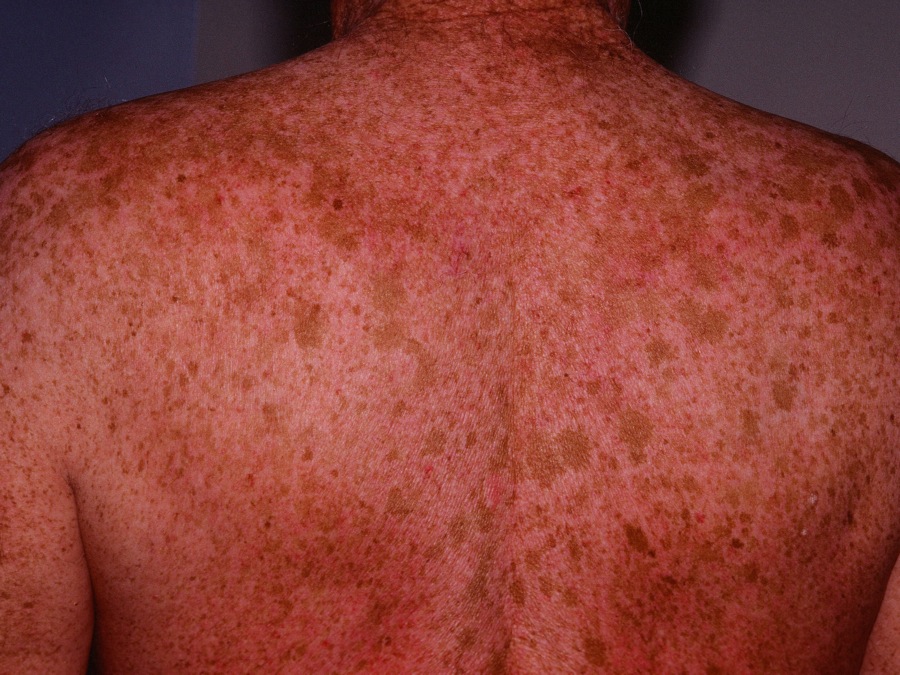
The sun has done tremendous damage to this patient's skin.

The sun has done tremendous damage to this patient's skin.
The sun can do tremendous damage to the skin. Those with fair skin and who burn easily are most susceptible. Signs of chronic sun damage include wrinkles, dark spots (lentigos), mottled pigmentation , freckling, roughness of the skin, precancers (actinic keratoses) and skin cancer. In older people, black heads, blood vessels and yellow bumps (solar elastosis) are common. Among those with skin of color, dyschromias, leathery skin and deeper rhytides are characteristic.
See also wrinkling and smoker's face.
Mottled pigmentation, telangiectasias, solar elastosis and actinic keratoses after chronic sun exposure is characteristic. The balding scalp, face, back, arms and back of the hands are typical places. Comedones are also common with chronic UV exposure--see Favre-Racouchot syndrome.
In a large study of Dutch women, a red meat and snack-dominant diet was associated with more facial wrinkles, whereas a fruit-dominant diet was associated with fewer wrinkles.
Patients who smoke should quit.
Daily morning sunscreen, a hat, sun avoidance and shade are recommended. Routine skin screen and biopsy of any suspicious lesions is critical. Since UVA plays a role in photoaging, broad spectrum sunscreens (e.g. containing zinc oxide) are recommended.
In one small study, sleep deprived women showed signs of premature skin aging [Dermatology Times Oct 2013].
Cosmetic options (e.g. topical retinoid, laser, chemical peel) abound and are beyond the scope of this website.
A DBPCT of a single course of topical 5% 5-FU cream BID x 2-4 weeks did not improve the signs of aging
Who is Dr. White? | Privacy Policy | FAQs | Use of Images | Contact Dr. White